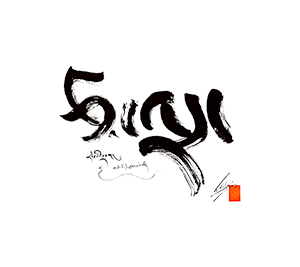Dṛḍhādhyāśayaparivarta
No edit summary |
m (Text replacement - " {{References}}" to " {{References}}") |
||
| Line 2: | Line 2: | ||
|TextClass=Sutra | |TextClass=Sutra | ||
|BuNayKarlDescription=RGVV relates a brief passage from this sūtra<ref>D224 (ten folios); the passage is found on fol. 172b.2–3. This sūtra is not found in the Chinese Buddhist canon. </ref> to the first three vajra points (the three jewels) of the Uttaratantra, which seems to be the reason why it became included in the category of ''tathāgatagarbha'' sūtras. However, there is nothing in this sūtra that is related to the teachings on ''tathāgatagarbha''—it mainly teaches that all phenomena are empty, without arising, and ceasing, which means that attachment and so on with regard to them are pointless. (p. 47) | |BuNayKarlDescription=RGVV relates a brief passage from this sūtra<ref>D224 (ten folios); the passage is found on fol. 172b.2–3. This sūtra is not found in the Chinese Buddhist canon. </ref> to the first three vajra points (the three jewels) of the Uttaratantra, which seems to be the reason why it became included in the category of ''tathāgatagarbha'' sūtras. However, there is nothing in this sūtra that is related to the teachings on ''tathāgatagarbha''—it mainly teaches that all phenomena are empty, without arising, and ceasing, which means that attachment and so on with regard to them are pointless. (p. 47) | ||
{{References}} | {{References}} | ||
Latest revision as of 15:46, 21 September 2018
One of the sūtra sources for the Ratnagotravibhāga, especially for the first three of the seven vajra topics discussed therein—namely, the Buddha, Dharma, and Saṅgha. Also known as Dṛḍhādhyāśayaparivarta, the main protagonist is Bodhisattva Dṛḍhādhyāśaya, who sees a beautiful girl on his alms round. He is attracted to the girl and tries to meditate on ugliness but fails and thus runs away to the mountains. The Buddha sees this, manifest as the beautiful girl, and chases him to say: "I should be relinquished in your mind. What use is giving up with your body. Dṛḍha! Running away physically cannot help you abandon attachment." Having said this, she jumps off a cliff and Dṛḍha reports to the Buddha who reminds him that the Buddha does not teach physical escape in order to eliminate attachment, hatred and ignorance.
Relevance to Buddha-nature
This sūtra is considered a source for the exposition of the first three vajrapadas in the Ratnagotravibhāga.
Description from When the Clouds Part
RGVV relates a brief passage from this sūtra[1] to the first three vajra points (the three jewels) of the Uttaratantra, which seems to be the reason why it became included in the category of tathāgatagarbha sūtras. However, there is nothing in this sūtra that is related to the teachings on tathāgatagarbha—it mainly teaches that all phenomena are empty, without arising, and ceasing, which means that attachment and so on with regard to them are pointless. (p. 47)
- D224 (ten folios); the passage is found on fol. 172b.2–3. This sūtra is not found in the Chinese Buddhist canon.
| Other Titles | ~ ārya-sthirādhyāśaya-parivarta-nāma-mahāyāna-sūtra |
|---|---|
| Text exists in | ~ Tibetan |
| Canonical Genre | ~ Kangyur · Sūtra · mdo sde · Sūtranta |
| Literary Genre | ~ Sūtras - mdo |
This Text on Adarsha - If it doesn't load here, refresh your browser.

